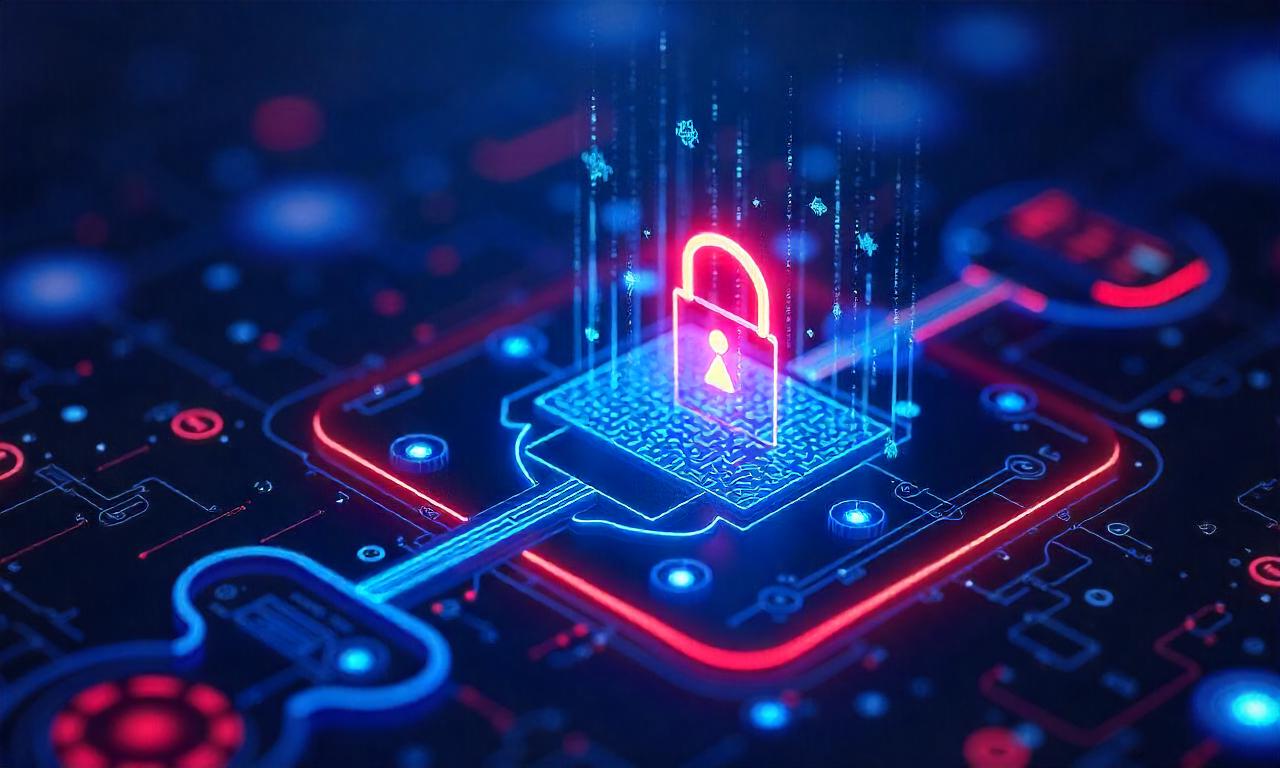# What is a VPN Kill Switch Feature: Everything You Need to Know
In today’s digital age, what is a vpn kill switch feature has become a critical component for anyone using a Virtual Private Network (VPN) to protect their online privacy and security. A kill switch, also known as a VPN kill switch, is a safety mechanism that ensures your internet connection is automatically cut off if the VPN connection drops, preventing any data from being exposed. This feature is essential for users who rely on their VPN to access sensitive information, bypass censorship, or secure their online activities while traveling or using public Wi-Fi. Understanding what is a vpn kill switch feature can help you choose a reliable VPN and enhance your digital safety.
## What is a VPN Kill Switch Feature?
### 1. Definition and Core Purpose A VPN kill switch is a built-in feature designed to protect your privacy and data security by disconnecting your device from the internet if the VPN connection fails. Unlike a regular VPN, which might leave your data vulnerable if it drops, a kill switch ensures that your internet traffic is routed through the encrypted tunnel at all times. This is particularly important for users who need a secure and anonymous online presence, such as journalists, activists, or individuals accessing sensitive information.
The core purpose of a kill switch is to act as a failsafe. When your VPN connection is interrupted, the kill switch automatically blocks all internet traffic, forcing your device to disconnect from the public internet until the VPN reconnects. This prevents your real IP address from being exposed and keeps your online activities private even during brief connectivity issues.
### 2. How It Works: A Technical Overview The kill switch works by monitoring the status of your VPN connection in real-time. If the VPN server goes offline, the feature detects this immediately and switches your internet traffic to a fallback mode. This fallback mode could be either disconnecting you entirely from the internet or routing your traffic through a default, secure gateway (e.g., a proxy server). The exact mechanism depends on the type of kill switch your VPN uses.
Most VPN kill switches operate on two primary modes: automatic and manual. In the automatic mode, the kill switch is always enabled, ensuring that your data remains encrypted even if the VPN connection drops. In manual mode, you have to manually activate the kill switch if you notice your internet connection is unstable. While manual kill switches offer more control, automatic ones provide greater security without requiring user intervention.
### 3. Key Components of a Kill Switch To understand what is a vpn kill switch feature, it’s important to break down its key components. First, the trigger condition determines when the kill switch activates. This could be a complete loss of the VPN connection or a partial disruption, depending on the provider’s setup. Second, the fallback mechanism ensures that your internet traffic is redirected to a secure network or cut off entirely. Third, the reconnection logic dictates how the kill switch behaves once the VPN connection is restored. Some kill switches reconnect automatically, while others require user confirmation before resuming internet access.
These components work together to minimize the risk of data leaks. For example, a manually triggered kill switch might block access to websites that are not securely encrypted until the VPN is reconnected. Meanwhile, automated kill switches are designed to prevent any data from leaving your device without encryption, even if the connection is only briefly disrupted. This seamless transition ensures that your online activities remain private and secure at all times.
## The Importance of a VPN Kill Switch Feature
### 1. Ensuring Data Security One of the main reasons a VPN kill switch is crucial is to ensure data security. When your VPN connection drops, your internet traffic is no longer encrypted, leaving your data exposed to potential hackers or unauthorized surveillance. This is especially concerning for users who access sensitive information like banking details, login credentials, or personal communications.
A kill switch acts as a barrier between your device and the public internet when the VPN fails. This means that even if your connection is unstable for a few seconds, your data remains protected. For individuals who prioritize online privacy, a reliable kill switch can be the difference between secure browsing and a data breach. By automatically cutting off internet access, it prevents any accidental exposure of your real IP address or location.
### 2. Protecting Privacy and Bypassing Censorship A VPN kill switch also plays a vital role in protecting your privacy. Without it, a brief loss of the VPN connection could allow your real IP address to be revealed, potentially exposing your online activities to third parties. This is a major concern for users in regions with strict internet censorship or those concerned about tracking by governments or corporations.
In countries where internet freedom is limited, a kill switch ensures that your connection remains secure even if the VPN server is temporarily unavailable. For example, if you’re using a proxy to access blocked websites and your VPN drops, the kill switch prevents you from accessing those sites without encryption, maintaining your anonymity and privacy. This feature is a must-have for users who rely on their VPN for security and anonymity.
### 3. Preventing Data Leaks During Connectivity Issues Connectivity issues are inevitable in modern internet usage, but a VPN kill switch helps minimize the risk of data leaks. When your VPN connection fails, the kill switch ensures that your device doesn’t send data over the unencrypted public internet. This prevents sensitive information from being exposed to potential threats.
For example, if you’re browsing the internet on public Wi-Fi and your VPN connection drops, the kill switch blocks your device from accessing any websites until the VPN is reconnected. This prevents your real IP address from being visible to anyone on the same network, including hackers or snoopers. By eliminating the possibility of data leaks, a kill switch provides an extra layer of protection for users who are concerned about their online security.
## How a VPN Kill Switch Feature Works
### 1. The Technical Process of a Kill Switch When you activate a kill switch, it monitors the status of your VPN connection in real-time. If the connection is lost, the feature blocks all internet traffic from leaving your device. This block is usually implemented at the network level, meaning that even applications like email or messaging services are prevented from sending data until the VPN is reestablished.
The kill switch works by constantly checking the connection between your device and the VPN server. If the server becomes unreachable or drops the connection, the feature switches your device to a secure network or disconnects it from the internet. This automated process ensures that your data remains encrypted even during brief connectivity issues, making it indispensable for users who need constant security.
### 2. Benefits of Using a Kill Switch The benefits of a kill switch are numerous. First, it ensures that your data is never exposed if the VPN fails, providing peace of mind for users who are concerned about privacy. Second, it simplifies the user experience by automatically handling the connection drop without requiring manual intervention. This is particularly useful for less tech-savvy users who may not be aware of the risks of an unsecured connection.
Another key benefit is that it prevents your real IP address from being leaked. This is critical for users who want to maintain anonymity online. Additionally, a kill switch can help you avoid tracking by corporations or governments, as your online activities are only visible through the encrypted tunnel. For example, if you’re working on a sensitive project and your VPN drops, the kill switch ensures that your work remains secure until the connection is restored.
## Types of Kill Switches: Automatic, Manual, and Hybrid
### 1. Automatic Kill Switch An automatic kill switch is the most popular and user-friendly option. It continuously monitors your VPN connection and blocks internet access immediately if the connection drops. This feature is always active, so you don’t have to worry about manually enabling it.

One advantage of an automatic kill switch is that it provides real-time protection without requiring any user input or setup. This is ideal for users who want to ensure their online security at all times, even when using public Wi-Fi or mobile data. However, some users may find it inconvenient if they accidentally lose internet access when the VPN connection drops, as they can’t browse the web until the connection is reestablished.
### 2. Manual Kill Switch A manual kill switch gives you more control over when to enable the feature. Instead of automatically cutting off internet access, you have to manually trigger the kill switch if you notice your connection is unstable. This option is useful for users who want to conserve battery life or avoid accidental disconnections.
However, manual kill switches require user awareness and action. If you’re not paying attention to your internet connection, your data could be exposed even if the VPN connection drops briefly. This makes manual kill switches less secure compared to automatic ones, but they are more flexible for users with specific needs.
### 3. Hybrid Kill Switch A hybrid kill switch combines elements of both automatic and manual kill switches. It monitors your connection in real-time but allows you to set specific conditions for when the kill switch activates. For example, you can configure the kill switch to block only traffic to certain websites or prevent data from being sent over unencrypted channels.
This type of kill switch is more advanced and offers a balance between security and convenience. It is ideal for users who want flexibility while still maintaining a high level of security. However, hybrid kill switches may require more configuration, which could be challenging for less experienced users. Despite this, they are a great option for those who want to customize their security settings.
## Choosing the Right Kill Switch for Your Needs
### 1. Factors to Consider When Selecting a Kill Switch When choosing a kill switch, there are several factors to consider. First, determine the type of kill switch you need based on your security requirements and user preferences. If you want maximum security, an automatic kill switch is the best choice, while a manual one is more suitable for users who prefer control.
Next, look for additional features that enhance the functionality of your kill switch. Some VPNs include a kill switch that blocks only specific traffic or integrates with other privacy tools like Tor or ad blockers. These features can provide added protection against data leaks or tracking. Additionally, check the reliability of the provider by reading reviews and testing their kill switch performance in real-world scenarios.
### 2. Best Practices for Using a Kill Switch To maximize the benefits of a kill switch, follow best practices that ensure its effectiveness. First, always keep the kill switch enabled unless you have a specific reason to disable it. This prevents any accidental exposure of your data when the VPN connection drops. Second, choose a reliable provider that offers a robust and tested kill switch. This reduces the risk of false positives, where the kill switch incorrectly blocks your internet connection.
Another best practice is to use a kill switch that supports multiple devices. This means that if you’re connected to a network with multiple devices, all of them are automatically protected by the kill switch feature. Additionally, consider the speed and performance of your VPN when using a kill switch. A slow or lagging connection could affect your browsing experience, so choose a provider that balances speed with security.
## FAQs: Everything You Need to Know About Kill Switches
### Q1: Is a Kill Switch Necessary for All Users? While a kill switch is not mandatory for every user, it is highly recommended for those who prioritize data security and privacy. If you’re accessing sensitive information or browsing on public Wi-Fi, a kill switch ensures that your data remains protected even during brief connectivity issues. However, users who are on a stable network and don’t mind manual intervention may choose to disable it.
### Q2: How Does a Kill Switch Differ From a Regular VPN? A regular VPN encrypts your internet traffic but may leave your data vulnerable if the connection drops. In contrast, a kill switch automatically disconnects your internet access if the VPN connection fails, ensuring no data is transmitted over the unencrypted public network. This makes a kill switch a critical feature for users who want maximum security without compromising their privacy.
### Q3: Can a Kill Switch Be Disabled? Yes, a kill switch can be disabled depending on the VPN provider’s settings. Some VPNs allow you to toggle the kill switch on or off, giving you control over its functionality. However, disabling the kill switch means you have to manually manage your connection to ensure your data remains secure. For maximum protection, it’s best to keep it enabled unless you have a specific reason to disable it.
Table of Contents
Toggle## Conclusion
A VPN kill switch feature is an essential tool for users who want to ensure their online security and privacy. Whether automatically or manually activated, this feature prevents data leaks by cutting off internet access when the VPN connection fails. Understanding what is a vpn kill switch feature helps you choose a reliable VPN and maximize its benefits.
By evaluating the type of kill switch, its functionality, and the provider’s reliability, you can make an informed decision that meets your security needs. With the right kill switch, you can bypass censorship, protect your data, and maintain anonymity online. As cyber threats continue to evolve, investing in a robust kill switch is more important than ever.
### Table: Comparing Different Types of Kill Switches
| Feature | Automatic Kill Switch | Manual Kill Switch | Hybrid Kill Switch | |——————————-|————————|———————|———————| | How It Works | Automatically cuts off internet if the VPN fails | Requires user to manually activate | Monitors connection and allows custom conditions | | Pros | Real-time protection, no user input | Flexible, less resource-intensive | Customizable, balances security and convenience | | Cons | Blocks all internet access | May leave data vulnerable if not monitored | Requires more configuration | | Best For | High security needs, less tech-savvy users | Users who prefer control, stable networks | Advanced users seeking customization |
## Summary
Understanding what is a vpn kill switch feature is crucial for ensuring online privacy and security. A kill switch automatically disconnects your device from the internet if the VPN connection fails, preventing data leaks and IP address exposure. It comes in three main types: automatic, manual, and hybrid, each with distinct advantages and drawbacks.
The importance of a kill switch lies in its ability to protect sensitive data and maintain anonymity even during brief connectivity issues. By choosing the right type of kill switch, you can balance security with convenience. Additionally, following best practices such as keeping the feature enabled and selecting a reliable provider ensures maximum protection.
In summary, a VPN kill switch is not just an extra feature—it’s a critical component of a secure online experience. Whether you’re working on sensitive projects, browsing on public Wi-Fi, or bypassing censorship, a reliable kill switch can significantly enhance your privacy and data security. With the right setup and configuration, you can ensure that your online activities remain protected at all times.














